How to warm up before a match
An effective tennis warm-up is a non-negotiable; follow our simple steps for the perfect pre-match warm-up.
Melbourne, 18 June 2013 | Nathan and Giselle Martin | Australian Tennis Magazine
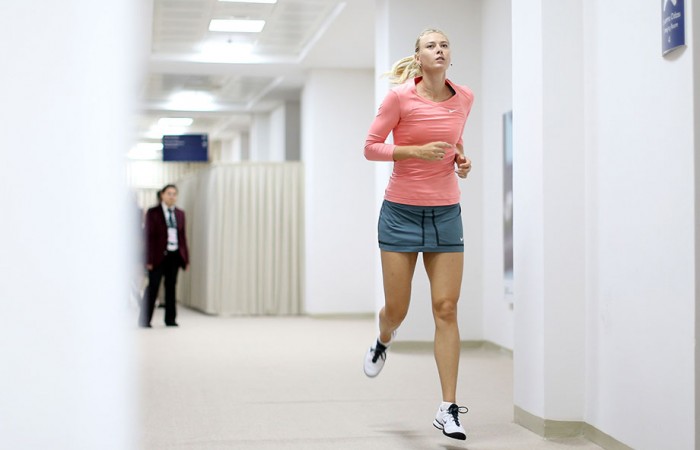
 An effective tennis warm-up increases heart rate and blood through the body, helps prepare the muscles and joints for exercise and stimulates the nervous system.
An effective tennis warm-up increases heart rate and blood through the body, helps prepare the muscles and joints for exercise and stimulates the nervous system.
The warm-up phase includes:
This warm-up should take between 10 and 15 minutes.
3–5 minutes of either skipping or running (forward, backward and lateral). Remember the aim is to increase your heart rate and circulation, so increase the intensity each minute.
Activating specific muscles works by stimulating certain muscles and getting them firing or “awake”. Most people have muscle imbalances or potential instability issues around certain joints, so it is important to stimulate the correct muscles and encourage them to work during exercise. Don’t confuse activation with muscle fatigue, activation works by stimulating the muscle not fatiguing it before exercise. Here you can find some samples of activation exercises.
a. Four Point
: 10–12 repetitions
Start on all-fours, draw your navel into your spine and keep your hips balanced. Exhale as you raise your right arm up until it is even with your shoulder and simultaneously lift your left leg up until it is even with your hip. Try to avoid any tilting of hips. Hold this position for 6–8 seconds. Repeat 10–12 repetitions.
b. Supine Bridge:
10–12 repetitions
Lying face up, with bent knees, feet hip width apart. Push through your heels and lift your hips up off the ground. Squeezing your bottom muscles together. (This helps minimise hamstring activation), try to avoid any tilting of hips. Hold this position for 2–3 seconds.
c. Shoulder External Rotation:
15–20 repetitions
Keep your elbows in, and set shoulder blades down and together. While keeping elbows in externally rotate forearm out. Control the movement and relax the shoulders (avoid lifting shoulder up to ears). Hold this position for 1–2 seconds. Repeat 15–20 repetitions.
Exercises are a great way to mobilise joints and lengthen muscle throughout the body. ROM exercises can be seen as an active stretch or loosening up of the body. The beauty of ROM exercises is they open up the “chain of movement” rather than isolating a specific area or muscle. This is important to do before participating in any sport, but especially tennis within its multi-directional ranges and loading patterns. Here you can find some samples of activation exercises.
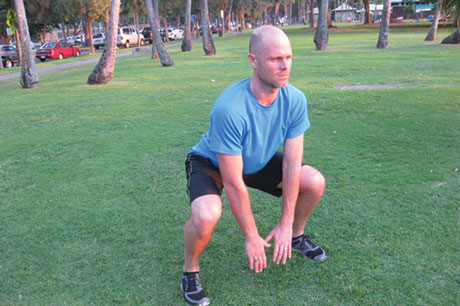 |
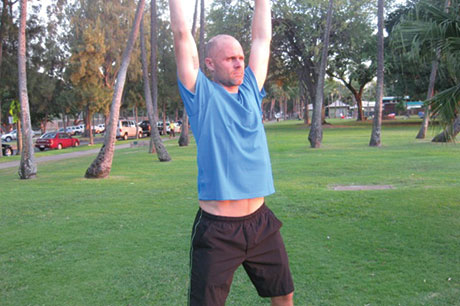 |
a. Sumo Squat Lift: 10–12 repetitions
Feet wide, toes out, body weight through heels, squat down ensuring knees are aligned with little toe. Feel stretch in the inner thighs. Come out of squat and lift arms over your head so you can feel a stretch under the arms. Repeat 10–12 repetitions.
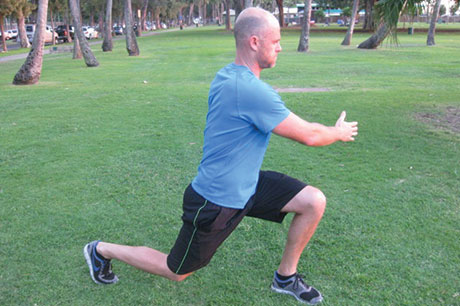 |
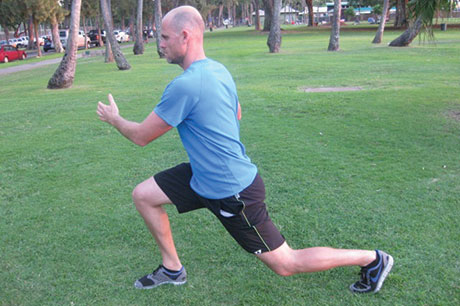 |
b. Lunge Twist: 8–10 repetitions
Step one leg forward and lower the back knee down towards the ground into a lunge position, hold this position and rotate your upper body over the front leg. Return to centre and repeat for the opposite side. Make sure you keep your back straight and chest up. Repeat 10 repetitions each side.
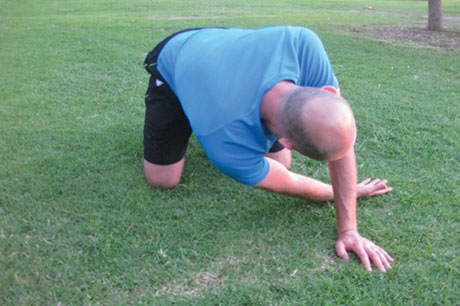 |
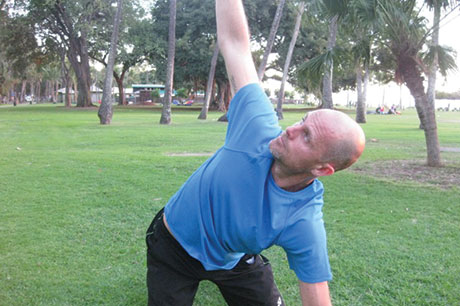 |
c. Thread the Needle (Thoracic Rotation): 10–12 repetitions
Take one arm underneath the chest, keeping palms up. Hold for 1–2 seconds, whilst exhaling slide arm out and rotate your upper body so you are looking up towards your fingers. Feel a chest stretch. Hold this position for 1–2 seconds. Repeat 12–15 repetitions.
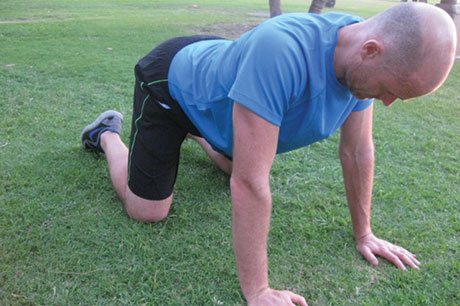 |
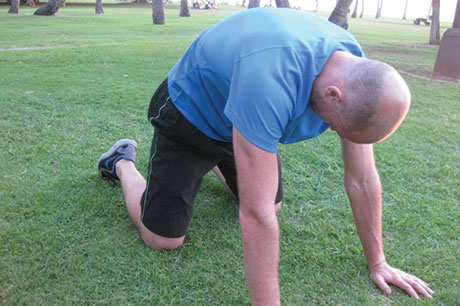 |
d. Spine Flexion/Extension: 12–15 repetitions
Kneel on all fours, knees under hips and hands under shoulders. Contract the abs and inhale. Tip the hip bones towards the ceiling while drawing the shoulders back and down away from your ears; look up. Exhale and tuck the chin while pulling you’re belly towards your spine. Round the back and feel a stretch down your spine.
This is the last phase of the warm-up sequence. Shadowing mimics the movements that would be performed on court. Shadowing gets the nervous system firing and body following specific movement patterns. These shadowing exercises can also be used to help prepare mentally before you play. The intensity of the shadowing should increase each minute, so by the time you have finished you are ready, not only physically but mentally, for the first point when you step on court. Perform shadowing for three minutes, alternating between forehands, backhands, overhead or smash and volleys.
For more tips from the pros on how to improve your game, check out the latest edition of Australian Tennis Magazine.
Trainers Nathan and Giselle Martin of Energise Health Management have been in the health and fitness industry for 15 years. They travelled on the WTA Tour from 2000 to 2004 and also worked at the Sanchez Casal Tennis Academy in Barcelona, Spain. They’ve worked with Sam Stosur, Svetlana Kuznetsova, Jennifer Capriati, Arantxa Sanchez-Vicario, Monica Seles and Martina Navratilova. The Bondi-based pair now work with Casey Dellacqua and Lleyton Hewitt. For further information, visit www.tennisfitness.com.au.